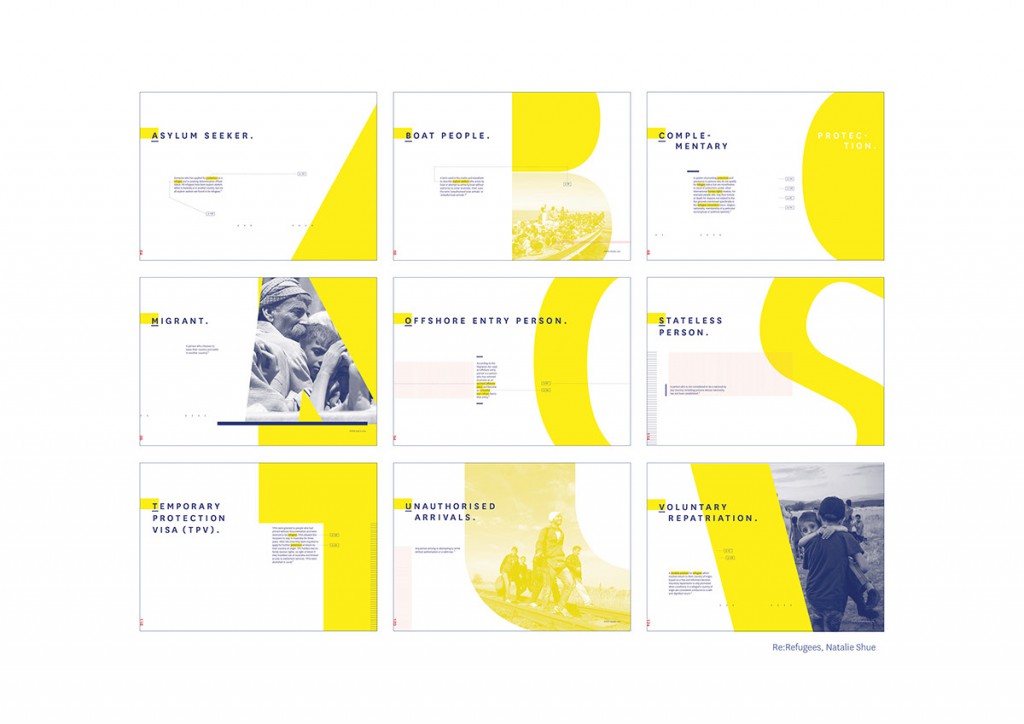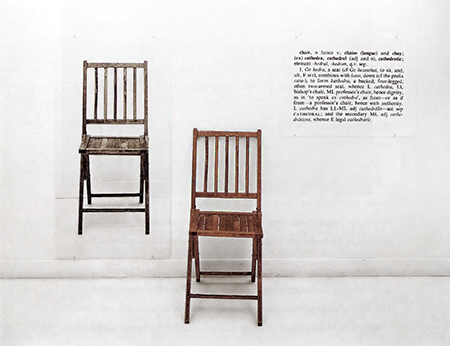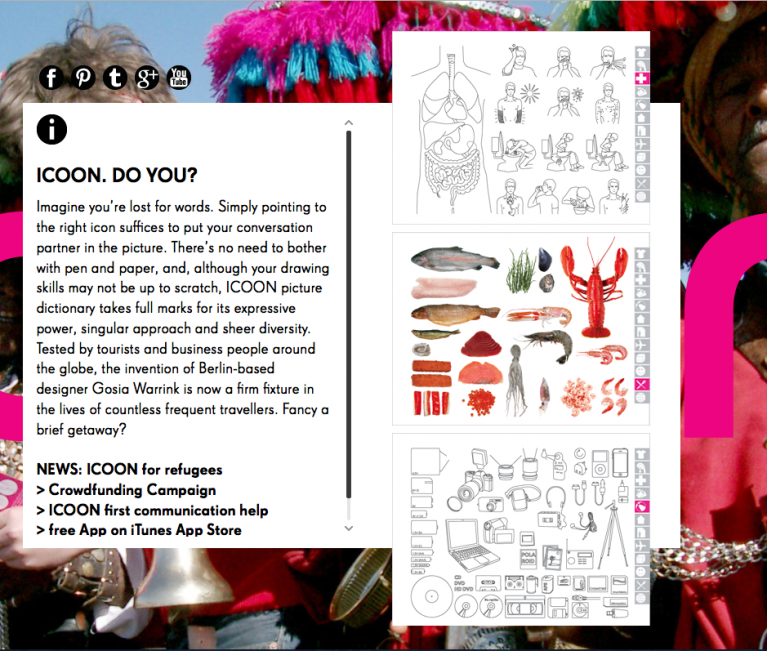
The circulation of myths and misinformation are significant barriers in understanding the issues concerning refugees and asylum seekers. It is a complex and delicate subject that can be difficult to approach, and much of this information is both restricted and misleading or misunderstood.
Re:Refugees is a two-part resource book educating us with the truth behind common myths and questions regarding refugees and asylum seekers and provides terminology frequently used in conversation, allowing us to understand the impact and power these words have. When informed with the truth, we gain clearer insight and a genuine understanding towards refugees, enabling us to appropriately respond to the realities of the refugee plight.This book is designed for aid workers or anyone interested in the field. I envisioned for it to be purchased online and could be supplied and distributed by NGOs to reach their networks and communities.
Inspiration
Dictionary reference: Joseph Kosuth
Standard
Joseph Kosuth – Tony Godfrey, Conceptual Art, London: 1998
‘One and Three Chairs’ (1965), by the U.S. artist, Joseph Kosuth. A key early work of Conceptual art by one of the movement’s most influential artists. Source: https://en.wikipedia.org/wiki/One_and_Three_Chairs#/media/File:Kosuth_OneAndThreeChairs.jpg
One and Three Chairs, 1965, is a work by Joseph Kosuth. An example of conceptual art, the piece consists of a chair, a photograph of the chair, and an enlarged dictionary definition of the word “chair”. The photograph depicts the chair as it is actually installed in the room, and thus the work changes each time it is installed in a new venue.
Two elements of the work remain constant: a copy of a dictionary definition of the word “chair” and a diagram with instructions for installation. Both bear Kosuth’s signature. Under the instructions, the installer is to choose a chair, place it before a wall, and take a photograph of the chair. This photo is to be enlarged to the size of the actual chair and placed on the wall to the left of the chair. Finally, a blow-up of the copy of the dictionary definition is to be hung to the right of the chair, its upper edge aligned with that of the photograph.
Source: https://en.wikipedia.org/wiki/One_and_Three_Chairs
Dictionary reference: ICOON
StandardPicture dictionaries when for those who are lost for words.
Issue Project: Solution Inspiration
StandardA campaign by Melati and Isabel Wijsen to ban plastic bags in Bali. This is our inspiration to urge people to save Pulau Ubin.
Calendar: box inspiration
StandardHow to assembly my collaterals in a box in a nice way? Could I try assemblage art…. Which can be functional as well… That means that my audience can interact with the goods inside without ruining the layout.. I mean, because I have a cassette that eventually needs to be played on a walkman using an earphone..
Anyway, here are some inspirations..
Calendar Project: Inspiration
StandardThe same as Rochor area, Losheng is also going to be demolished to make way for the building of Taipei’s Rapid Transit Systems. Hence, Chen Chieh-jen created a video installation comprising of four narratives about the people who live there.

Timekeeping Project Reflection
StandardI was reading Creative Confidence by Tom Kelley and David Kelley on my way on the MRT. When I arrived at this particular section about “stop planning and start acting,” I realized that this is the lesson that I learned during my group’s effort to make timekeeping device! I was affirmed that it is indeed unlikely that my first trial would be a huge success. What I have to do, at the end of the day, is keep doing and prototyping. Start making! Then, I will get better along the way.







